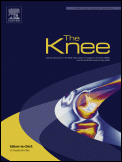
ARTHROPLASTY
Quadriceps-sparing TKA reduced time to discharge vs standard minimally-invasive approach
This report has been verified
by one or more authors of the
original publication.
Knee. 2014 Jan;21(1):189-93. doi: 10.1016/j.knee.2013.07.010. Epub 2013 Aug 2.
102 patients undergoing total knee arthroplasty (TKA) were randomized to receive either a minimally-invasive quadriceps-sparing (MIS) approach or the standard medial parapatellar approach. Clinical, functional and radiological outcomes were compared during the immediate postoperative period and again at 2 years. Results indicated that patients treated using the MIS technique experienced significantly shorter time to discharge readiness and fewer complications. Clinical and functional outcomes were comparable between groups, and there was no evidence of radiographic loosening in either group at the 2-year follow-up.
Unlock the full ACE Report
You have access to {0} free articles per month.Click below to unlock and view this {1}
Unlock NowCritical appraisals of the latest, high-impact randomized controlled trials and systematic reviews in orthopaedics
Access to OrthoEvidence podcast content, including collaborations with the Journal of Bone and Joint Surgery, interviews with internationally recognized surgeons, and roundtable discussions on orthopaedic news and topics
Subscription to The Pulse, a twice-weekly evidence-based newsletter designed to help you make better clinical decisions
Exclusive access to original content articles, including in-house systematic reviews, and articles on health research methods and hot orthopaedic topics
Or upgrade today and gain access to all OrthoEvidence content for just $1.99 per week.
Already have an account? Log in


Subscribe to "The Pulse"
Evidence-Based Orthopaedics direct to your inbox.
{0} of {1} free articles
Become an OrthoEvidence Premium Member. Expand your perspective with high-quality evidence.
Upgrade Now













































































